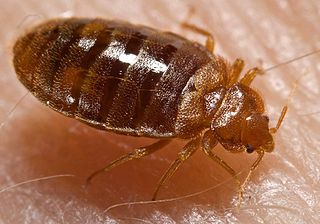
Identification
A bed bug can individually and collectively cause a number of health effects including skin rashes, psychological effects and allergic symptoms. Bed bug bites or cimicosis may lead to a range of skin manifestations from no visible effects to prominent blisters. Diagnosis involves both finding bed bugs and the occurrence of compatible symptoms. Treatment involves the elimination of the insect but is otherwise symptomatic.
Because infestation of human habitats has been on the increase in developed countries, bed bug bites and related conditions have been on the rise as well, since the 1980s–1990s. The exact causes of this resurgence remain unclear; it is variously ascribed to greater foreign travel, more frequent exchange of second-hand furnishings among homes, a greater focus on control of other pests resulting in neglect of bed bug countermeasures, and increasing resistance to pesticides. Bed bugs have been known human parasites for thousands of years.
Infestation
It is possible for anyone to become infested with bed bugs, which are small biting insects that multiply quickly and travel easily. An infestation can cause anxiety and a feeling of shame. They can also cause secondary infections, allergic reactions and financial hardship.
Inspection
The Inspector will provide information over the phone about bed bug identification and what is needed to treat the infestation and prevent it from coming back.
If necessary, the Inspector will conduct a site visit (determined on a case by case basis).
The Inspector may contact building management and pest control professionals to ensure proper treatment.
Public Health Inspectors are available to present educational seminars on bed bugs.
In severe infestations, Inspectors may contact external agencies to help get the necessary assistance to properly clean, de-clutter and prepare the unit for treatment.
